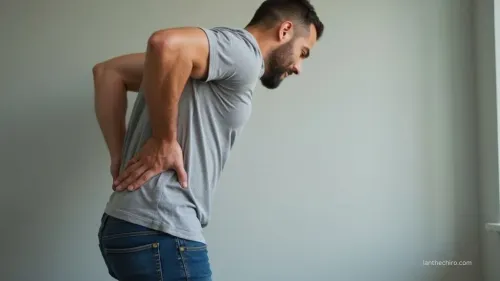Dry Needling for Weightlifters: Fixing Malaysian Gym-Goers' Rotator Cuff & Lower Back Pain
If you’re struggling with rotator cuff or lower back pain from weightlifting in Malaysia, dry needling targets stubborn muscle knots and eases pain rapidly.
By releasing trigger points in the shoulder and lumbar muscles, it improves blood flow, speeds recovery, and helps restore proper movement, so you can get back to lifting safely. Sessions are quick, effective, and medication-free.
If you’re curious how this fits with rehab and training, you’re about to find out.
Understanding Shoulder and Lower Back Injuries in Malaysian Weightlifters

Shoulder and lower back injuries are common challenges for Malaysian weightlifters, often caused by repetitive overhead movements, heavy lifting, and improper technique. If you’re experiencing pain, it’s likely due to stress on your rotator cuff, especially the supraspinatus or strain in your lumbar region.
Trigger points in muscles like the infraspinatus and subscapularis frequently develop from overuse or inadequate warm-up. These tight, sensitive spots limit your range of motion and can worsen with poor posture or muscle imbalances.
Lower back pain often stems from lifting with incorrect form or overtraining, placing undue pressure on the lumbar spine. By understanding these mechanisms, you can focus on prevention and recovery, addressing both rotator cuff health and trigger points to maintain peak performance and reduce injury risk.
What Is Dry Needling and How Does It Work for Muscle Recovery?
When you’re dealing with stubborn muscle pain or tightness from lifting, dry needling offers a targeted, evidence-based solution. This technique involves inserting fine needles directly into a trigger point, a sensitive spot in your muscle that causes pain and restricts movement.
By stimulating a local twitch response, dry needling helps deactivate these myofascial trigger points, reducing muscle knots and tension. The process also boosts blood flow to the affected area, delivering nutrients and removing waste to speed up recovery.
Additionally, dry needling activates motor neurons, which improves muscle recruitment and restores normal function. For weightlifters, this means you can experience faster recovery, less soreness, and improved range of motion in muscles that are injured or overused, all without relying on medication.
How Dry Needling Eases Rotator Cuff and Lower Back Pain in Lifters

Even if you’re diligent about your form, heavy lifting can strain the rotator cuff and lower back, leading to pain and limited mobility. Dry needling offers a targeted, evidence-based solution by addressing specific trigger points in key muscles such as the supraspinatus, infraspinatus, and lower back erector spinae.
By releasing these tight trigger points, dry needling helps reduce muscle tension, restore normal activation, and decrease strain during lifts. This technique also boosts blood flow, which accelerates the healing of injured tissues in both the shoulder and lower back.
As a result, you’ll experience less pain, better range of motion, and improved muscle coordination, helping you return to training safely and prevent future injuries that often plague weightlifters and Malaysian gym enthusiasts.
What to Expect During a Dry Needling Session in Malaysia
If you’re considering dry needling to manage lifting-related pain, knowing what happens during a typical session can help you feel more prepared and confident.
In Malaysia, a trained therapist will insert thin, sterile needles into precise trigger points in your affected muscles, such as the supraspinatus, infraspinatus, or lumbar region. You might feel a brief twitch, dull ache, or heaviness, these sensations mean the therapy’s targeting the right spots.
Sessions usually last 15 to 30 minutes, with therapists adjusting needle depth and angle to address your specific pain.
Afterward, you could notice mild soreness or fatigue in the treated area, but these symptoms typically fade within a day or two, allowing you to return to your routine feeling relieved and supported.
Combining Dry Needling With Rehab and Strength Programming

A strategic combination of dry needling with rehab and strength programming offers weightlifters a powerful approach to injury recovery and performance enhancement.
When you pair dry needling with targeted rehabilitation exercises, you’ll accelerate muscle activation and improve recovery from rotator cuff and lower back injuries.
Integrating dry needling into your strength routine addresses trigger points and corrects faulty movement patterns, so you move more efficiently while lifting.
Dry needling targets trigger points and faulty movement patterns, helping you lift with greater efficiency and reduced risk of injury.
Properly timing your dry needling sessions supports gradual increases in load and intensity, helping prevent re-injury as you progress.
This approach also optimises neuromuscular control, enhancing both performance and long-term joint health.
Frequently Asked Questions About Dry Needling for Lifters
Is Dry Needling Good for Rotator Cuff Pain?
Yes, dry needling can help manage rotator cuff pain. It targets muscle trigger points to reduce tension, improve mobility, and support recovery, especially when combined with rehab exercises.
Can Dry Needling Help With Lower Back Pain?
It can. Dry needling helps relieve lower back pain by reducing muscle tightness, improving circulation, and supporting better movement patterns. It works best alongside corrective exercise and postural care.
Who should avoid dry needling?
Dry needling isn’t recommended if you have a bleeding disorder, skin infection, nerve damage, or a pacemaker. It should also be avoided during pregnancy in certain areas. Check with your practitioner first.
How do you recover from a rotator cuff injury in the gym?
Focus on controlled rehab: rest the area, use targeted strengthening and mobility drills, and scale your workouts appropriately. Prioritise form and don’t push through pain. A physiotherapist or chiropractor can help guide the process.
Getting Back Under the Bar With Less Pain
Picture yourself gripping the barbell, shoulders strong and back pain-free, ready to crush your next set.
With dry needling, you’re not just managing pain, you’re actively accelerating your recovery and reclaiming your training. Backed by research and embraced by athletes across Malaysia, this evidence-based solution helps you move freely and train with confidence.
Don’t let injuries hold you back; take charge and return to the gym stronger, healthier, and ready for anything.














